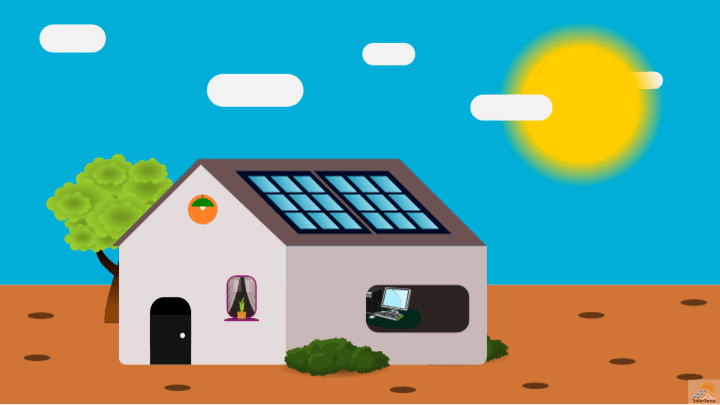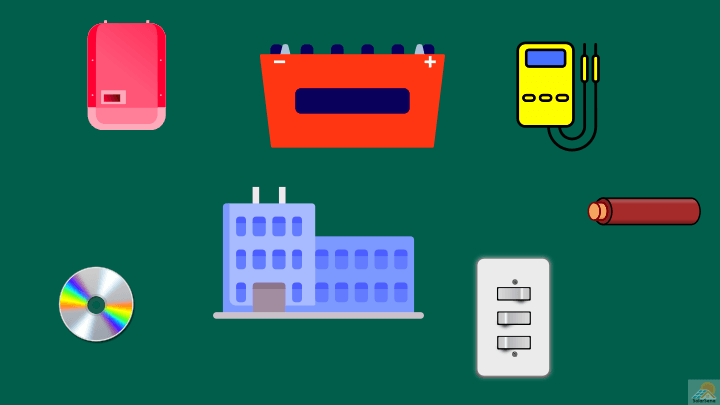We receive a tremendous amount of solar energy from the sun every second. Solar energy is nothing but sunlight, and it is absolutely free. One of the best ways to harness free-falling solar energy is by solar panels. Solar panels are the most popular renewable technological product. They are versatile and have diverse applications. In this article, we will answer some basic questions, like what are solar panels, how they work, their efficiency, etc.
What are solar panels?
Solar panels are photovoltaic devices that convert incident light into electricity. They produce electric current and voltage whenever exposed to light. Another alternative name for solar panels is photovoltaic panels or PV panels.
Photovoltaics means the conversion of light energy into electrical energy. And the phenomenon is called the photovoltaic effect. The history of the photovoltaic effect goes back to the 19 century. However, the commercial adoption of the phenomenon began in the 1950s at Bell Laboratories.
We can disassemble solar panels into solar cells, a frontend glass coating, and a backend polymer sheet. And an aluminum frame completes the panel; it gives strength to the panel and protection to the edges of the glass. There are some additional layers other than the previous, like EVA films, but we have ignored them to make things simple.

The term “solar panel” is interchangeable with “solar module” even though there is a difference between both terms. For practical purposes, we can say both are the same.
To better understand what solar panels are, it is necessary to learn what solar cells are.
Solar cells
Solar cells are the main unit of a panel. They are rectangular or octagonal units that actually convert light into electricity. The rest of the parts of the panels—glass coating, polymer backend, and an aluminum frame—act as supporting material.
The number of solar cells in a panel varies to a great extent. Common configurations are 32, 36, 48, 60, 72 and 96 cells per panel. The right configuration depends on the end-user. For example, commercial panels will be larger and have more cells than residential ones.

As previously said, solar cells are real photovoltaic components. Each cell produces electricity from incident light. And the total solar power of the panel is the combined effect of all cells.
Solar cells consist of different layers of photovoltaic material. Mostly, the photovoltaic material used in the construction of solar cells is crystalline silicon. Crystalline silicon is a semiconductor and exhibits remarkable photovoltaic properties. It absorbs sunlight falling on the surface of solar cells and converts it into electricity.
How do solar panels work?
Now, you know solar cells are the basic unit of solar panels that turn solar energy into electrical energy. Let’s move forward to the working of solar panels.
Layers in solar panel
If you make a straight cut of a solar panel and give a look at the cross-section of the panel, it will appear similar to the diagram below.

As we see from the diagram, it consists of different layers. Each one is briefly explained as follows:
- Glass coating: High strength tempered glass protects the solar cells from external forces, like rain, hailstones, moisture. It is the first front layer exposed to the environment.
- Anti-reflective coating: It minimizes the reflection of solar rays striking solar panels.
- Front contact electrode: The front contact electrode collects electrons, negative charge carriers, from the n-type layer.
- n-type: The n-type layer is a photovoltaic layer composed of phosphorus-doped crystalline silicon. It has free electrons.
- p-n junction: The p-n junction is the depletion region formed between n-type and p-type layers.
- p-type: The p-type layer is made of boron-doped crystalline silicon. It’s the second photovoltaic layer and has free holes, positive charge carriers.
- Back contact electrode: The back contact electrode collects holes from the p-type layer.
- Polymer backend: The polymer backend gives support to the entire solar panel.
Working
When rays of light strike solar panels, it generates free electrons and free holes near the depletion region. The generated free electrons move into the n-type layer. And from there, they sweep into the front contact electrode.
In a similar vein, the holes flow into the back contact electrode via the p-type region. This flowing of the charges in the circuit constitutes an electric current. Thus, solar energy is transformed into electrical energy.
Every cell in a solar panel produces an electrical current in the same way. The total solar power produced in a panel will be the combined effect of all cells.
Recommended article: How does the photovoltaic system work?
Types of solar panels
There are two popular types of solar panels: monocrystalline and polycrystalline. Monocrystalline silicon (mono c-Si) is a form of silicon having uniform crystal properties. Panels made from monocrystalline silicon are more efficient and give an aesthetic look.
In monocrystalline solar cells, all four corners are clipped during the manufacturing process. It gives them an octagonal shape—see the figure below. Moreover, they differ in color.

In a polycrystalline solar panel, solar cells use polycrystalline silicon (poly c-Si). Unlike mono, polycrystalline solar cells have non-uniformity in their crystal structures. It makes them less efficient than mono. However, polycrystalline has an advantage in cost over monocrystalline. Polycrystalline solar panels are cheaper and easy to manufacture.
Thin-film solar panels
Besides the above two, there are thin-film solar panels. Thin-solar panels are emerging technology and struggling to compete with crystalline silicon. They have limited a commercial market due to lower efficiencies. The three common thin-film solar panels are cadmium terrible, CIGS, and amorphous silicon.

Thin-film technology has the advantage of flexibility. It makes thin-film cells suitable to use on curved surfaces, especially in building, RV roofs, boat surfaces.
Efficiency
What is the efficiency of the solar panel? A simple answer is 17 to 22%. Most commercial and residential panels show efficiency of around 20%. The number has been improving over the years. As of 2020, the highest reported efficiency is 22.8% by SunPower.
High efficiency is one of the most important deciding factors in photovoltaic technology. It is the measure of the amount of electricity produced to the amount of solar energy incident. Although we have achieved significant improvements, efficiency continues to remain the highest challenge in photovoltaic technology.
Cost
The average cost of solar panel installation has substantially decreased since the last decade. And it will continue to decrease in the coming years. For a medium-sized photovoltaic system, the cost is between $3 to $4.5 per watt in the United States.
Applications
They are diverse practical applications of solar panels besides residential and commercial installations. They are used in spacecraft, satellites, power generation plants, standalone systems, solar pumps, solar heating systems, water purification plants, etc.



